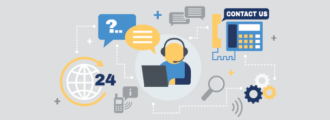Distribution is a fundamental part of the supply chain process, which is why understanding how to create Advanced Shipping Notices (ASN) is such a vital skill to have. While they help create efficiencies in the supply chain, we also know that creating ASNs in JD Edwards can be a little intimidating. To help make things easier on you, we put together this list of things to remember about creating ASNs in JD Edwards.
Communication is King
The first thing to remember is that, just like in your personal relationships, communication with your trading partners is the most important thing to keep top of mind when working with ASNs. After all, there’s no “right” way to create an ASN—it all comes down to what information is helpful for your trading partner to receive and what information (and format) you’re able to provide. It’s important to communicate with your trading partner so that you understand what their minimum fields are, (for example, truck number, trailer number, etc.) as well as what type of ASN they need.
JDE Supports a Lot of Fields and Formats
One of the things that makes creating ASNs in JD Edwards so intimidating is the sheer volume of fields and formats the software is able to support. Honestly, you’re spoiled for choice. For example, if your trading partner is in the US, they’re likely going to use the ANSI X12 format, while European trading partners will need Edifecs. JD Edwards also supports UPC and SSCC codes, multi-packs, and more.
You Don’t Have to Use Everything You Have
Just because there’s a field in JDE or it accepts a certain type of format, that doesn’t mean you have to use that field or format. JDE offers tools and solutions that, if you use EDI (Electronic Data Exchange) or another 3rd-party provider, you won’t need to worry about. (They’re there in case you need them, but you don’t have to use them.)
Take Purge EDI ASN Records (R47039), for example. As we all know, JD Edwards is an end-to-end system, but you don’t want extraneous data to clog up your system. So when the “Successfully Sent” field gets flipped to “Yes,” you could use R47039 to purge those records once you don’t need them anymore, but if you’re using EDI or another 3rd-party provider, there’s no need.
Most Important JD Edwards ASN Programs and Reports
Of the many ASN programs and reports JD Edwards supports, three of the most important ones are Work With Ship Notice (P47036), Work With Ship Notice Details (P470371), and Hierarchical Configuration Definition (P47HL). The first two are your bread and butter, where you can modify, add, and delete raw information before it’s extracted and sent to your trading partner. The last tool, P47HL, we’ll get into in our next tip!
Keys to Good ASN Hierarchies
Sorry to sound like a broken record at this point, but the keys to creating good ASN hierarchies really depend on what you and your trading partner need. Your standard for ASN hierarchies is going to be the Hierarchical Configuration Definition (P47HL), as we said before. It’s where your layers and codes live (S O I). Your second option for hierarchies the individual report version. It’s a processing option that you can set on the specific level, and it serves as your quick-and-dirty option. Finally, you can always use the data field under the EDI tab in Customer Billing Instructions and enter your S O I data there.
Entering S O I data in the Customer Billing Instructions is perfect when you have a trading partner that doesn’t need to have an ASN every single time. Just split them onto a different version, and then update the billing instructions with the needed instructions when the client asks. With this last method, you don’t have to worry about level, hierarchy, etc.—it’s already in the billing instructions, so you can just run it.
General Tips to Keep In Mind
Creating ASNs in JD Edwards seems daunting, but once you set them up correctly, they work like a charm. Remember to focus on clear communication and stay organized, and you’ll be good to go!
While creating ASNs in JD Edwards can be a little intimidating, at the end of the day, the system is designed to help you and your trading partners communicate more effectively. Advanced Shipping Notices are a great way to tell your trading partners what they can expect you to send them.
If you need help creating ASNs in JD Edwards, contact us today. Our wide network of experienced, senior-level JDE supply chain consultants will be able to ascertain what data your trading partners need from you and what formats you’re able to provide to them. And even better, our consultants will teach you what you need to know so you’ll be able to do it next time.



